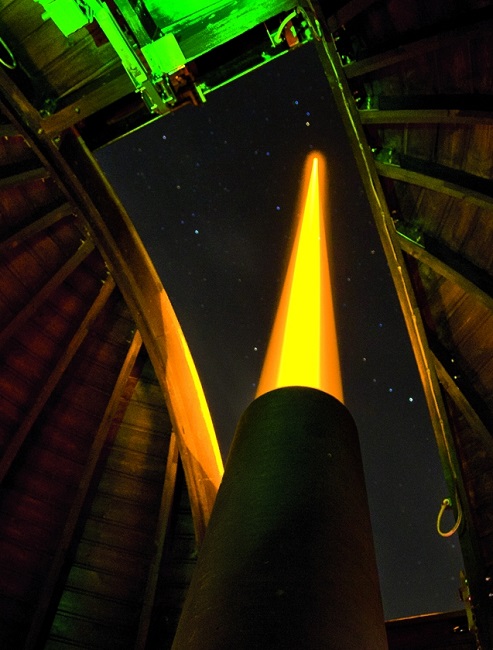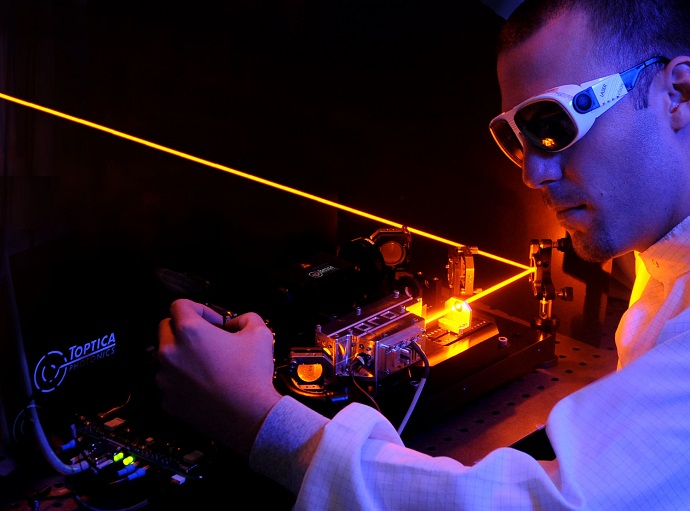28. March 2014
Over the course of the last three years, TOPTICA has developed a new generation of sodium guide star lasers to be deployed at ESO’s Adaptive Optics Facility at the Very Large Telescope (VLT) in Paranal, Chile. Until August 2014, TOPTICA will complete the delivery of four such lasers plus one spare unit to the European Southern Observatory (ESO), hoping for first light on the sky in Paranal in early 2015.
The newly developed laser systems consist of a narrow band and tunable diode laser with 50 mW output power at 1178 nm, a Raman Fiber Amplifier stage developed by MPB Communications of Canada and a subsequent resonant frequency doubling stage. The output frequency is actively locked to a high resolution precision wavelength meter (HighFinesse GmbH). The work was performed under a multi-year ESO development contract using the ESO EFRA license for the amplifier step.
The task of the laser system will be to resonantly excite the naturally occurring sodium atoms in the Earth’s mesosphere at an altitude of 90km, creating an “artificial star” for the adaptive optics of the telescope. This star allows the active mirror control system correct for wavefront distortions induced by turbulence in the Earth’s atmosphere and obtain much sharper images.

ESO’s portable guide star laser unit in operation during field tests at the Allgäu Public Observatory (courtesy: Timm Kasper).
The newly developed guide star laser overcomes the problems of previous laser approaches that were difficult to operate in an observatory environment (altitude of up to 4200 m, gravity-invariant operation, minimal heat dissipation and remote automated control). The laser head thatwill be directly installed onto the guide star launch telescope can be spatially separated by up to 27 m from the more bulky pump-laser. It also features a patented integrated D2b sideband generation (repumper) scheme, increasing the return flux dramatically for the generation of much brighter laser guide stars than previously possible.
“We are proud that we have already received follow-up orders from other telescope facilities,” says Dr. Wilhelm Kaenders, President of TOPTICA. “Although the technology path for the laser was clear to us very early on, it was the system engineering part, that was most demanding.”
Link to laser guide star website:
http://www.toptica.com/sodiumstar
ESO Announcement: Powerful New Laser Passes Key Test
http://www.eso.org/public/announcements/ann14020/














